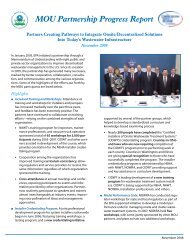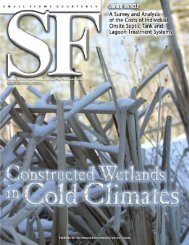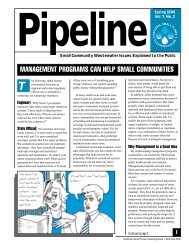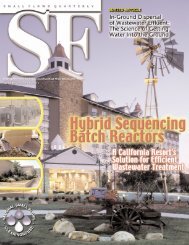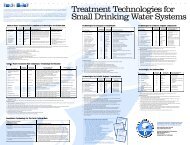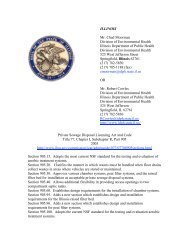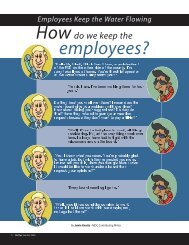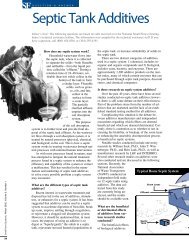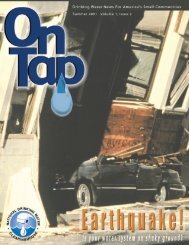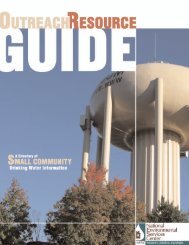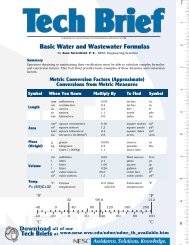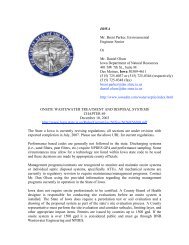Download - National Environmental Services Center - West Virginia ...
Download - National Environmental Services Center - West Virginia ...
Download - National Environmental Services Center - West Virginia ...
You also want an ePaper? Increase the reach of your titles
YUMPU automatically turns print PDFs into web optimized ePapers that Google loves.
Small Flows Quarterly, Fall 2004, Volume 5, Number 4<br />
LetterI<br />
Dear Editor:<br />
As I watch the wheels of government turn, I<br />
sense a dangerous and costly grinding. It comes<br />
from the management of septic waste from<br />
homes in our shoreline towns.<br />
Here in Connecticut, our registered sanitarians<br />
are monitored by their town health directors.<br />
They follow the rules of the Public Health Code of<br />
the State Department of Public Health. The system<br />
has been in place for years. They supervise<br />
septic installations.<br />
For new installations of conventional septic<br />
tanks and leach fields, this system of management<br />
works. Our septic waste is safely and economically<br />
recycled into wholesome water and<br />
harmless gases. Make no mistake; both the<br />
process and its administration are proven. For repairs<br />
of failed systems that erupt to the surface,<br />
again the sanitarians can and do promptly enforce<br />
and supervise repair. The recently enacted<br />
law sponsored by State Representative Marilyn<br />
Giuliano will help permit correction of many<br />
failed systems.<br />
A problem arises when a failure underground<br />
does not come to the surface. Here, the existing<br />
law does not permit a sanitarian to enter upon a<br />
person’s property to investigate. A test well on<br />
public land nearby might suggest a failure or an<br />
illegal subsurface hooking of a sewer pipe from a<br />
home to a town storm drain. According to present<br />
law, however, the town sanitarian cannot come<br />
upon the private property to conduct a harmless<br />
but colorful dye test to find the source of the contamination.<br />
At the same time, the state Department<br />
of <strong>Environmental</strong> Protection (DEP) can, and sometimes<br />
does, declare an area to be polluted, but the<br />
sanitarian is still not permitted to search out the<br />
source in order to have it corrected.<br />
One might ask how does this come to pass? I<br />
believe it is because the Connecticut State DEP<br />
does not want the town sanitarians to succeed in<br />
doing their jobs. The DEP wants those failures,<br />
which they will then try to correct by building still<br />
more structural sewage treatment plants. These<br />
plants are part of the DEP empire and job security.<br />
Unfortunately, these sewage treatment plants<br />
are expensive to build and maintain, and they are<br />
often unreliable. Also, they discard a valuable resource—water.<br />
Worse, they discard less-than-pure<br />
water into our rivers. The rivers are thus polluted as<br />
they are loaded with impure or chlorinated water.<br />
Marvin Roberts<br />
Old Lyme, Connecticut<br />
18




